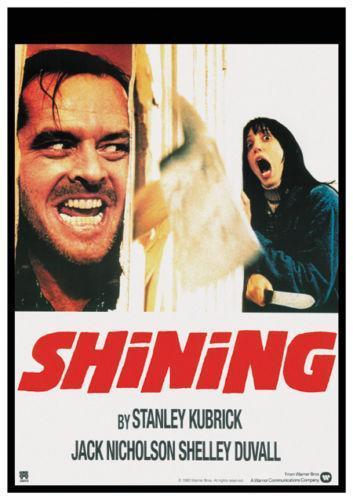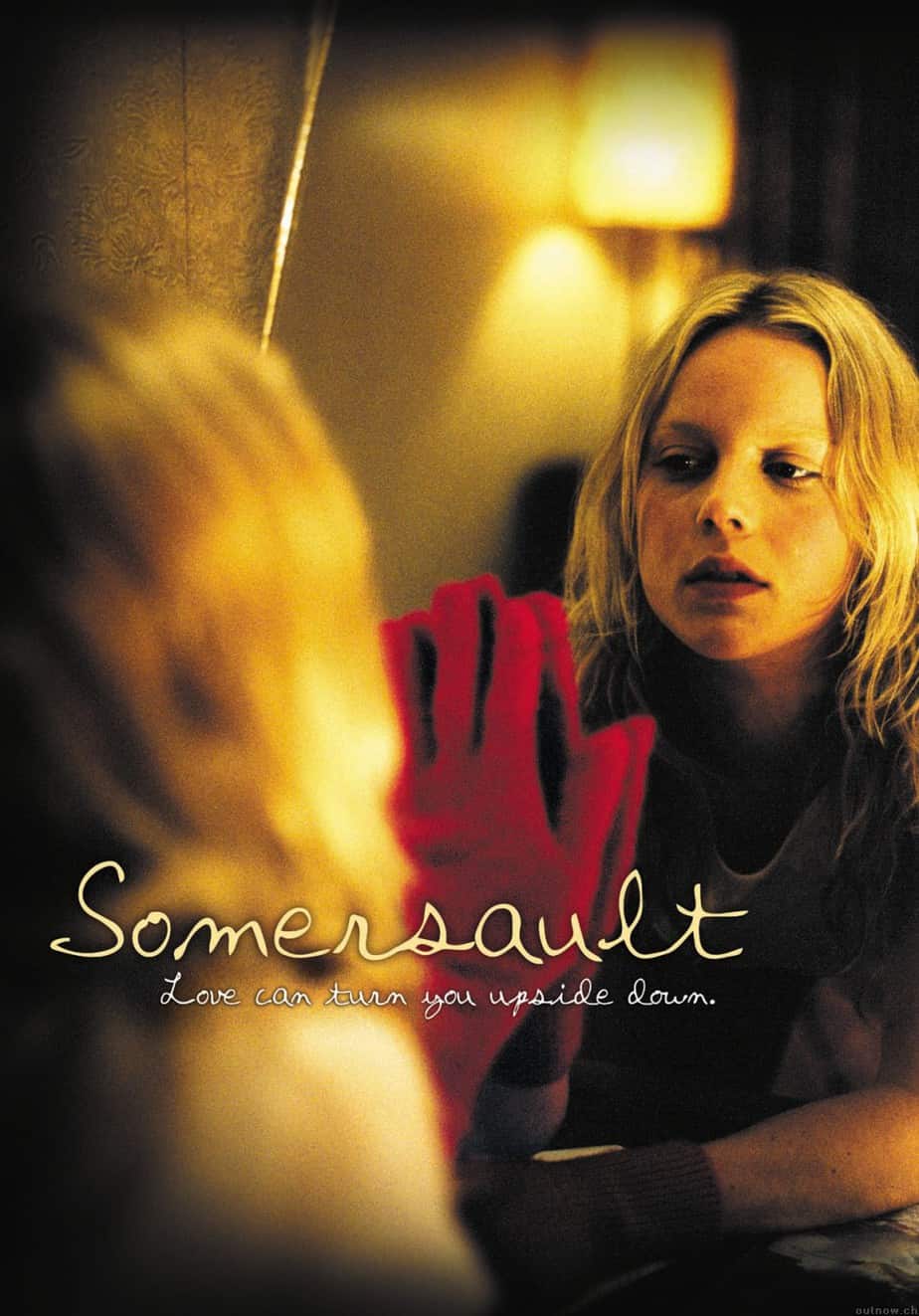Last month I wrote about the film American Honey, set in America but written and directed by Andrea Arnold, who is English. If there’s an Australian equivalent of American Honey, Somersault is it. Somersault is a 2004 film written and directed by another (all-too-rare) female filmmaker, Cate Shortland.
SIMILARITIES BETWEEN AMERICAN HONEY AND SOMERSAULT
- Both are written from a female point-of-view, with a feminine sensibility
- Male characters are often the cause of the downfall, and definitely the cause of the downfall at the beginning. In both we have a step-father figure sexually assaulting the young woman supposed to be in his care.
- The older women in these young women’s lives are hugely problematic and can’t see past the system which pits young women in sexual opposition to older women, seeing themselves not as mentors but as opponents.
- The young woman — the hero — sets out on a mythic journey of her own, pushed out of what sufficed for a home by her wicked step-mother archetype.
- Along the journey she meets a range of opponents and allies — her challenge is to understand who is a true opponent and who is a true ally. This is not an easy task, because the people she meets are problematic characters in their own right, with dishonesties of their own. More complicated than that, problematic people can prove allies in their own warped way, by offering a lesson in how not to lead a good life.
THE ENDING
The major difference between Somersault and American Honey is the ending, but it’s only a surface difference: In American Honey, Star never returns home. She has found a new home, on the road. But Heidi of Somersault returns home to her mother, in a presentation of a happy ending. I don’t see this as a happy ending. It depends on whether the mother has undergone some sort of revelation in Heidi’s absence. Heidi may be better to stay away from her mother. But this is left off the screen.
STORYWORLD OF SOMERSAULT
The setting is different, of course. Somersault is set in Jindabyne, or ‘The Australian Alps’ — probably not the image of Australia most non-Australian audiences would associate with this country. The narrative takes place at the end of winter, as work for itinerant workers is winding down. Abbie Cornish (who plays Heidi) spends about half the film wrapped up in winter gear and the other half naked as a baby (which I think is partly the point).
Behind closed doors, Heidi reveals her childlike side, conducting imaginary romantic dialogues with Joe in the mirror and poring over her scrapbook. Ms. Cornish, who suggests a teenage Naomi Watts, evokes the full spectrum, from vulnerable child to self-assured young woman, of Heidi’s personality.
NYT
See also: The Seasons Of Storytelling
Jindabyne feels like a heterotopia even to Australian audiences. There’s a creepy-as-all-get-out crime film, also set in Jindabyne. (The film is called Jindabyne., because that’s all that’s required for a creepy title.) Jindabyne is cold when the rest of Australia remains warm. Three hours from Canberra, even Canberra feels removed to the major cities of Australia, so that’s saying something. (I live near Canberra myself.) As a ski town, Jindabyne is busy at some times of the year. The snow melts and it quickly returns to its semi-deserted state. Horripilation is inherent to such places, which is why Stephen King knew to set a story in a resort town at its deserted time of year. Birds, humans, any kind of wildlife know, instinctively, that when a place clears out, something feels horribly off. It’s probably primal.

There has been heavy post-processing with Somersault, with the blues and whites as a symbol for emotional detachment.
CHARACTERS OF SOMERSAULT
Australian filmmakers are often good at writing authentically naiive dialogue. Their young characters are not mini-adults. They are authentically young. Another excellent example is Warwick Thornton’s Samson and Delilah (2009). It’s pretty painful to watch, actually. If only the characters could communicate better, they could live happily ever after. But we talked exactly like this at their age. We didn’t know what we wanted. We certainly did not know how to get it, and neither does Heidi. Nor does Joe, played by Sam Worthington.
Cate Shortland’s Somersault reminds me of Sally Wainwright’s Happy Valley. Both are stories about sexual violence against women. Both writers have been careful to include a wide spectrum of men, each representing an archetype. In Somersault we have a lot of bad men, but each is bad in his own way:
- The mother’s boyfriend sees nothing wrong with doing sex to his teenage step-daughter when he gets the opportunity. The opportunistic, unthinking, but still very damaging man.
- Joe is a product of a masculine culture in which being manly is the only option. His same-sex kiss gives the audience insight into how Joe must be struggling to conform to this role. Joe steps in to be the hero when Heidi is in danger of being raped. Punching a guy in the face is the only tool he has.
- Joe’s father is no help to him. We see him briefly, reading the paper, doggedly avoiding any sort of emotional connection with his son, even though the son is desperately seeking that with him. ‘Don’t wake your mother.’ This is a man who fulfils the role of husband and father, but probably only on the surface. He goes through the motions of being a good man but his head is down the whole time.
- Joe’s friends exist to show the masculine friend dynamics. Their bonding is done via women, exchanging information about who is sleeping with who, treating sex like a conquest and boast-worthy achievement. Screenwriting gurus will tell you the hero needs a big argument with an ally at some point. The friend will interrogate the hero’s decisions. Heidi has no friends in Jindabyne, so as proxy, it is Joe who has the big argument with one of his friends about how he is living his life. Joe definitely has his own character arc in this film.
- Off-screen, we have Irene’s son who has murdered a man. This guy is your ultimate, clear-cut villain. But he’s not interesting. We never meet him. The shades of grey are far more interesting for women writing stories about rape, the male gaze and everything in between.
- The guy credited only as ‘staring man’ represents the male gaze in general, and foreshadows something even more creepy when Heidi asks for a job at the ski supplies shop.
- Turns out this creepy guy (revealed later to be Bianca’s father figure) is another opportunistic type. At first I thought he was a replica of Heidi’s mother’s boyfriend, only in another town. But unlike Heidi’s mother’s boyfriend, this guy is older and knows exactly what he’s doing. Bianca’s father is deliberately (rather than stupidly, inadvertently) destroying the relationships women have with each other. He goes home and lies to Bianca that Heidi made a pass at him. He is disgusted by his own aroused response to Heidi and turns it outward.
- Likewise, Cate Shortland takes the storytelling opportunity to make a distinction between the two men who Heidi ‘invites’ back to her room. One of them suggests they leave, knowing that sex with a stoned person can never be consensual. But when his friend goes ahead with it, he collapses into laughter, prioritising the friendship with his mate over the safety of the young woman. Both are bad; one is slightly worse. On the other hand, is one really worse? Neither of them pull back from the situation.
Heidi is invited back to Bianca’s house and we are introduced to Bianca’s little brother. Bianca’s mother is training him with flashcards to read faces. (An ineffective exercise, by the way, since a description of the expression is written right below the face itself. Presumably the kid can read words if not faces.) Bianca explains to Heidi later that her brother is autistic. In an outdated, 2004 explanation of autism, she explains that her brother lacks ’empathy’, unable to read other people. This is completely inaccurate — we know that now. Bianca describes not empathy (which autistic people have in spades), but social-emotional agnosia.
With increasing autism awareness, storytellers are now making use of autistic characters to say something deeper about their themes. I believe Cate Shortland has written these characters to show us all the different ways in which people misunderstand each other. The autistic boy shows us an exaggerated form of misunderstanding, which means the theme is hammered home strong for the audience.
THEMES OF SOMERSAULT
Stephen Holden, writing for the New York Times, describes this story as ‘a movie about the looks on people’s faces and the disparity between the surface and the roiling chaos beneath.’ People are different underneath. People are hard to read, even without their clothes. People tell lies. They leave things out.
The anagnorisis for Heidi is not made clear to the audience. What, exactly, has she learned from this experience? She tells her problematic proxy boyfriend she’s glad they met. She’s definitely meant to have learned something from this guy. But what? I believe this is left to audience imagination. I don’t believe she’s learned much about boyfriends, unfortunately.
Here’s what she has definitely learned: She cannot be her authentic self if she goes through life telling lies. Irene has learnt this too. They learn it together. The Battle scene which leads to this anagnorisis is the argument between Irene and Heidi in which Irene evicts Heidi for inviting young men in the middle of the night. These boys create a scene. (The attempted rape and punch to the face is the first stage of the Battle scene, but is not the part that leads to the anagnorisis.) Only then does Heidi’s mask come off. (Masks are very important in storytelling, especially in certain genres, especially at the Anagnorisis stage of a story.) Heidi admits to Irene that her mother is not dead. In turn, Heidi reveals to Irene that she knows Irene’s son is in prison, and demands to know exactly why. Only when the two women are completely honest with each other are they able to find temporary peace. Although I suspect Heidi went on to have many more terrible boyfriends, I imagine she’s more truthful with herself and to them. This alone will have helped her a bit.

